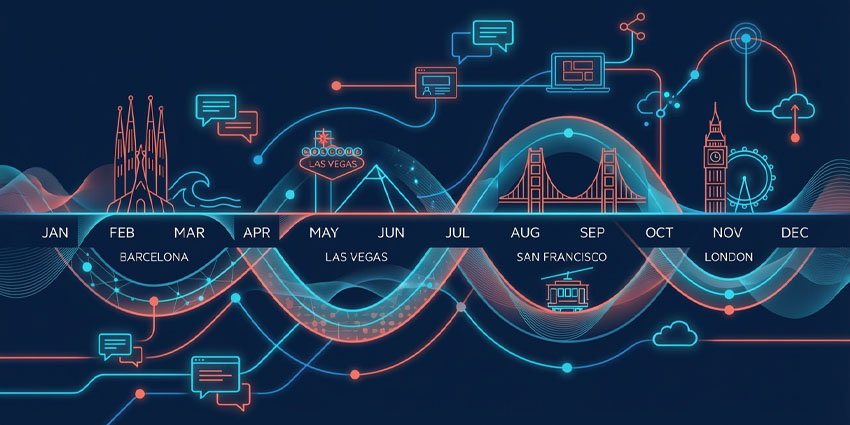Teams are the Building Blocks of Business Success

According to Professor Feng Li, and the Cass Business School report, the new digital workplace has created an environment where Teams are the essential building blocks of any modern organisation. These teams are capable of producing impeccable results when provided with the correct “Team to Market” guidance.
Team to Market solutions are built up of a new generation of workplace collaboration technologies, cultivated and optimised to help teams evolve and perform with exceptional agility. These new tools use consistent communication opportunities to keep knowledge constantly flowing, creating more informed high-performance teams in the digital age. What’s more, because this conversational environment reduces the reliance on one-to-one emails, it builds a new structure for information. Teams have a:
“…rich, permanent, searchable record of organisational knowledge”
In the age of the team, new digital working environments are superseding traditional systems that have dominated the workplace in the past, according to Cass Business School. Finding the right systems, and using them to empower the workforce properly, is the foundation of the new battleground for competitive advantage. If you can deliver the kind of support your teams need to thrive, then everything else falls into place.
An Ever-Evolving Community of Teams
According to Feng, teams in the workplace are a fluid “work in progress”. They evolve in phases of innovation and execution and respond to changes in the marketplace. Some teams are long-lived and autonomous, with highly engaged members, and others are formed just to fulfil one specific goal. The power of the collaborative apps in the workforce today is that they allow business leaders to create and dissolve teams quickly, breaking down temporally and organisational barriers instantly.
Systems for collaboration, like Slack, allow team members to choose for themselves how and when they need to communicate. This also makes managing cognitive load in the workplace a lot easier. As a result, communication bottlenecks are reduced. Individual workers and teams can both work to cut down on informational overload and prevent the workplace from becoming too cluttered.
According to Cass, empirical evidence now shows that the modern thread and channel-based communications environments created by solutions like Slack are on the rise. Even the gaps between generations that previously made these tools difficult to embrace in the past is narrowing. Messaging is now increasingly used both at work, and in the lives that we lead outside of work.
Managing Collaboration Successfully
In the new workplace, it’s clear that collaboration is a pivotal component of achieving team success. However, like any other aspect of an effective business, it needs to be managed correctly. There’s a risk that real-time and always-on communication could also exhaust and overwhelm employees, leading to losses in productivity and creativity.
According to the Cass business school, companies need to commit to “maintaining a psychologically safe environment”, and that kind of thing requires ongoing effort. Psychological safety, like the need for collaboration, can be a fluid concept that changes and varies from one team to the next. Despite this, the psychological safety of the workplace is an:
“…essential condition for organisational learning, innovation, and excellence”
Companies need to think carefully about how they’re going to embrace the collaborative landscape in a way that’s not only suitable for improving productivity, but effective for their teams too. High-performance teams need interpersonal communication opportunities, and the ability to leverage software when they choose with ease. Complexity must be reduced for the sake of performance, particularly now that the “average enterprise is using over 1,000 different software apps.”
Integrating existing software tools within a collaboration hub could help teams to save time and share knowledge in a more cohesive fashion. This could also eliminate some of the silos that would otherwise prevent effective communication and collaboration.
Supporting the Future of Work
Collaborative environments built for the age of teams are essential in the current landscape. However, they need to be carefully introduced, well managed, and intuitive for all users. According to Professor Feng Li and Cass Business School, more research will be required to understand how the current collaboration technologies emerging in the market can be accessed. These systems have the power to redefine the patterns of communication and collaboration that we use every day.
However, if we rush into embracing new tools too quickly, without the right planning, then we could put team cohesion and management of cognitive load at risk. Companies need to put the right research into figuring out how they’re going to sustain and delight their high-performance teams during the digital age.
Cass Business School also highlights that research into the collaborative landscape also needs to research how collaborative tech can help us to overcome traditional constraints. In the past, teams have been held back not just by old-fashioned technology, but geographical separation too. Everything from differences in time zones, to cultural changes and organisational boundaries can stop a business from being it’s most productive. However, the future of collaborative apps could help with this, offering everything from better organisation of teams, to language translation and more.
There’s no doubt that teams are the future of the workforce. The question for now, is how companies can properly empower and support their teams with the applications that are available to enhance their day-to-day operations.
Read the Slack and Cass Business School ‘Team to Market’ Report.







